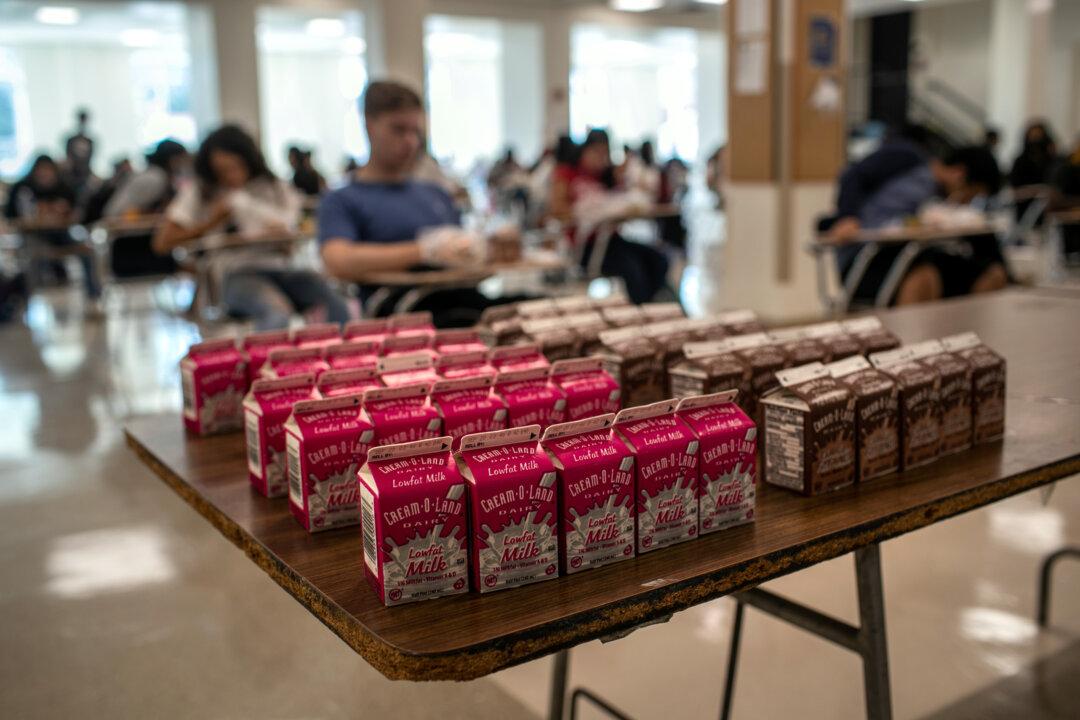Schools across the country will need to include less sugar and salt in meals but can keep chocolate milk on the menu, the Biden administration said in its announcement of new nutrition standards published Wednesday.
The new rules marks the first time added sugars will be limited in school meals nationwide, according to the U.S. Department of Agriculture (USDA). Federal regulators said the change is based on complaints from parents and teachers about excessive amounts of added sugars in common food items, such as cereals, yogurts, and flavored milks.





